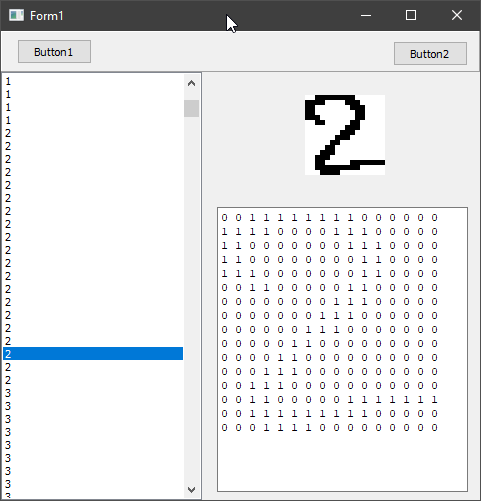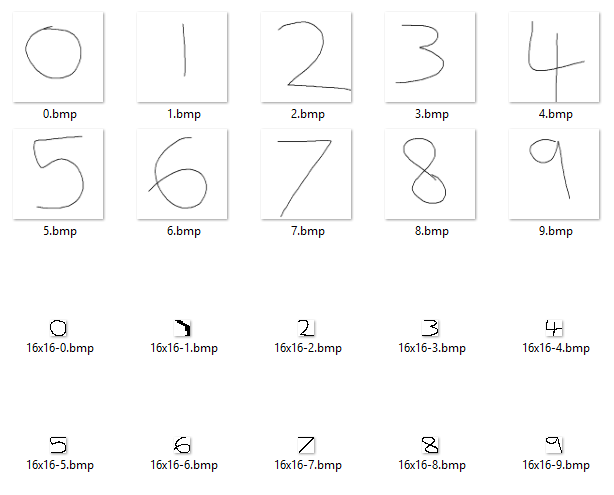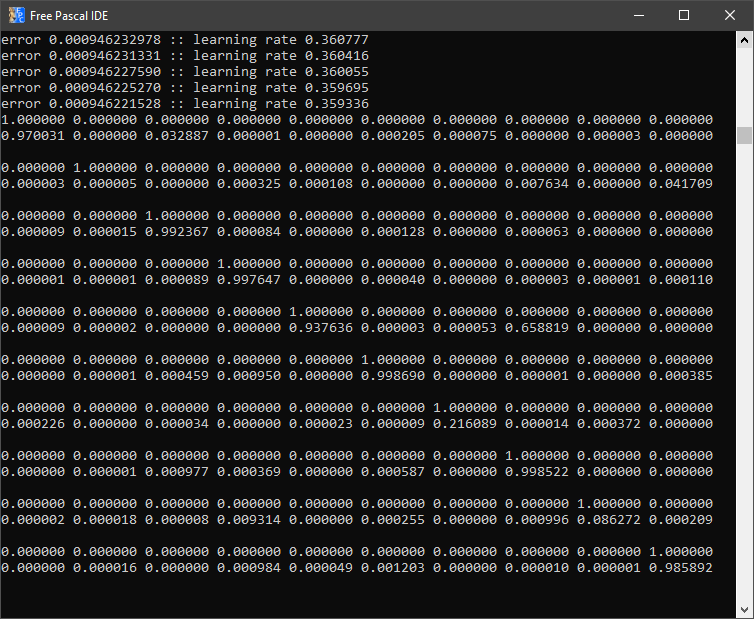Matthew Hipkin
Into The Unknown
Now that PasTinn is up and working, it's time to go beyond predicting digits that already exist in the semeion training dataset. What about some digits of my own?
Well, this is where things get interesting. I scribbled some numbers using a touch screen device and saved them, knocked them down to 16x16 and converted them into the same format as the training data - the neural network decided that only my zero looked remotely like a zero! I ran the data through the original C-based tinn aswell to make sure it wasn't my port (it wasn't).
I decided to take a closer look at the training data, so after creating a Delphi-based application to do just that (compiled download for Windows available here) I discovered that aside from some 1's all of the digits had no surrounding whitespace whereas my shrunken scribbles did.

This required another tool (Lazarus this time - Windows download available here) to take my scribbles, remove outer whitespace and then stretch them into their 16x16 boxes for processing.

The output from this tool looked promising, aside from the 1 which had gone a bit wobbly. All that was left to do was to run this data through the neural network..

Not a bad outcome at all! I modified the test application included with PasTinn to loop all 10 digits found in the new test data file and the above is the result. 0: perfect! 1: yeah, well that went wobbly anyway. 2 to 5: perfect. 6? Not sure what's wrong with my 6 - obviously the neural network isn't a fan! 7 and 9 also perfect, but again with 8 it didn't have a clue.
In the above test, I had left the nhid value at 28 but ramped up the iterations to 512 - maybe some more fiddling will improve the accuracy of those two anomalies.
I think I'll post again in a few days with the results from various hidden layer/iteration combinations - might be interesting to see.
Class documentation is also now available for PasTinn.
Posted in pastinn on 2019-01-03 22:21:23
blog comments powered by Disqus